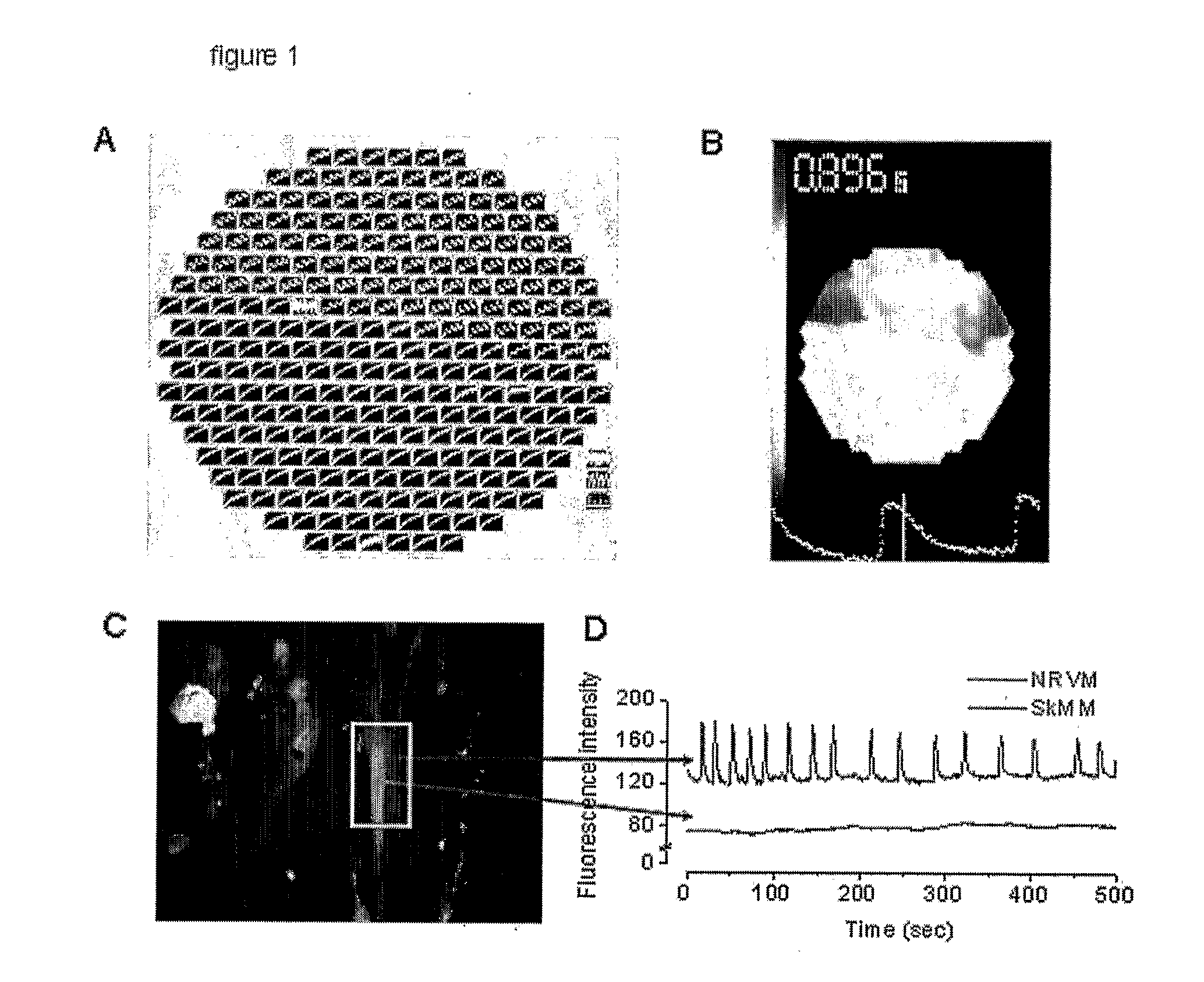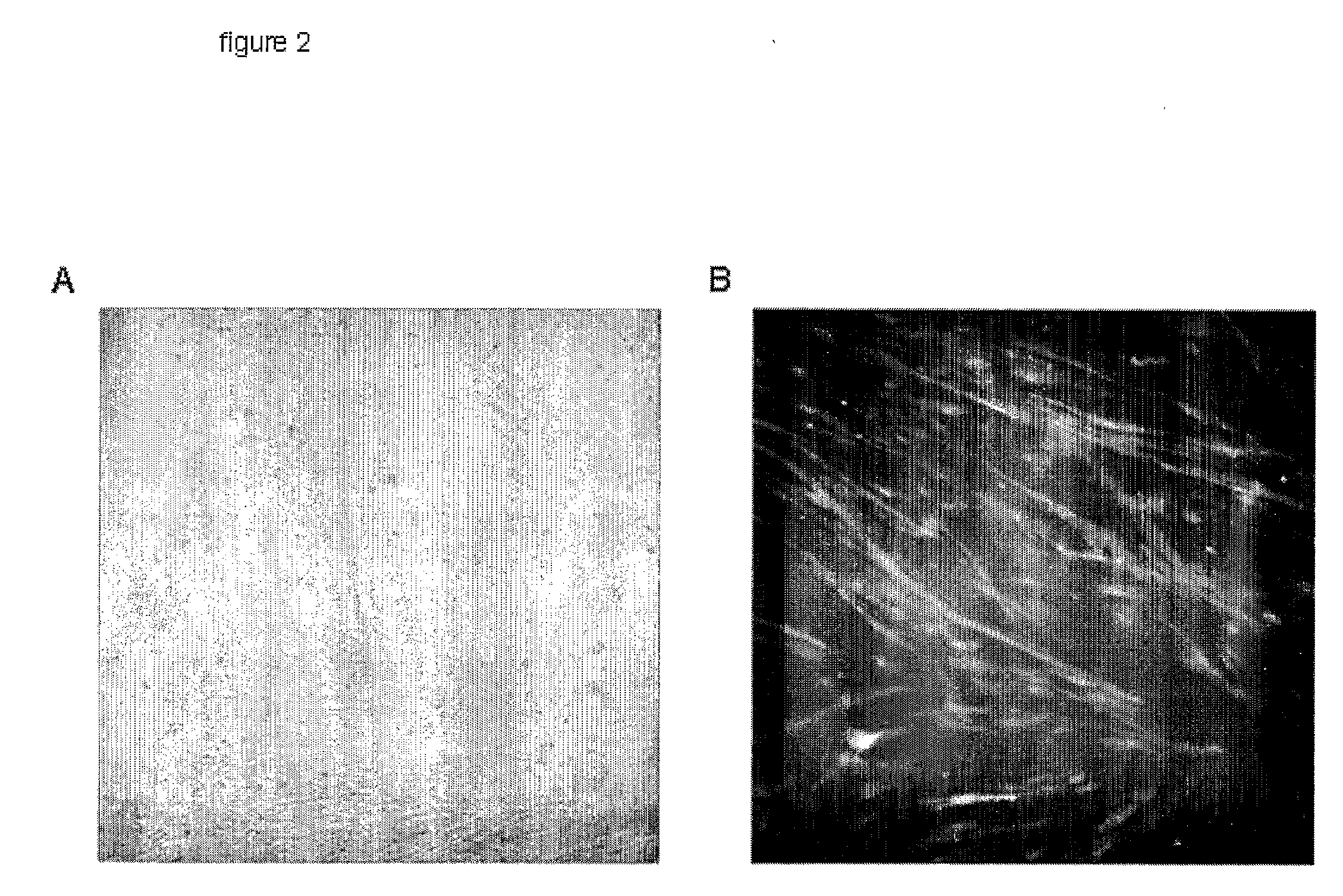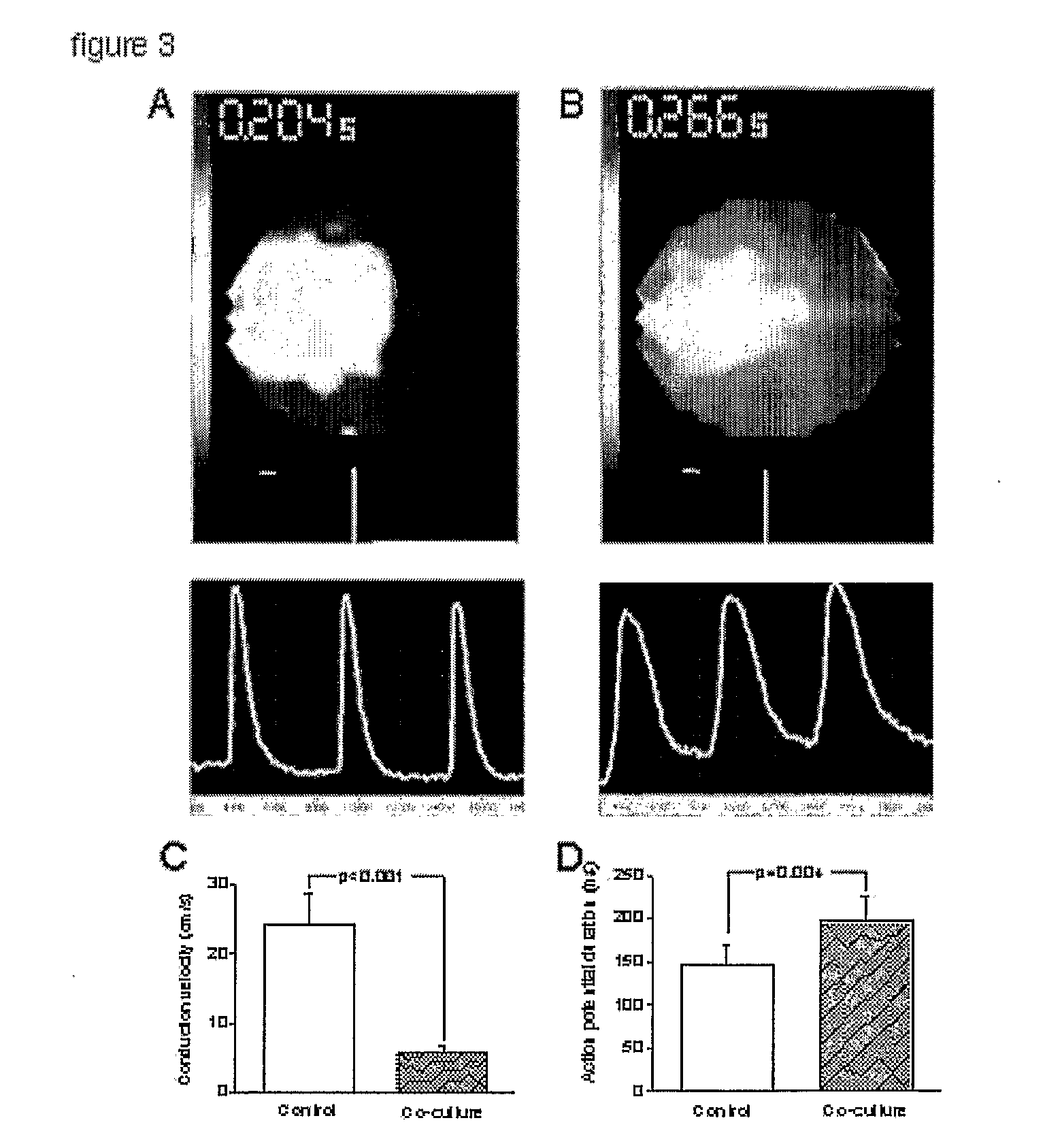Preventing Arrhythmias Associated with Cell Transplantation
a cell transplantation and arrhythmia technology, applied in the field of cell transplantation, can solve the problems of slowing of conduction velocity, congestive heart failure, and high risk of complications, and achieve the effect of improving electrical conductivity
- Summary
- Abstract
- Description
- Claims
- Application Information
AI Technical Summary
Benefits of technology
Problems solved by technology
Method used
Image
Examples
example 1
Materials and Methods
[0032]The lenti-vectors pLV-CAG-GFP and pLV-CAG-Cx43-GFP were generated from second generation lentiviral vector, pLV-CAG SIN-18 (Trono lab) under the control of the promoter CAG. Recombinant lentiviruses were generated by co-transfecting HEK293T cells with the plasmids pLV-CAG-GFP or pLV-CAG-Cx43-GFP, pMD.G and pCMVAR8.91 using Lipofectamine 2000 (Invitrogen). Lentiviral particles were harvested at 24 and 48 hrs post-transfection and titered by FACS analysis. For transduction, lentiviruses were added to the myoblasts (MOI=10), with 8 μg / ml polybrene to facilitate transduction. Lentiviral transduction was confirmed by examining GEP expression under fluorescence microscopy (Nikon) and by immunostaining and western blot for Cx43.
[0033]Cells were fixed with 4% paraformaldehyde for 5 min at room temperature and then permeabilised with 0.075% saponin. Cx43 was detected using a monoclonal mouse anti-Cx43 antibody (Chemicon) and an Alexa Fluor-c...
example 2
Lack of Electrical Coupling Between Adjacent Cultures
[0044]One likely contributor to arrhythmias following myoblast transplantation is the predicted absence of electrical coupling between NRVMs and myotubes. Indeed, mathematical simulations have shown that, with decreased gap junction coupling, conduction is very slow but, paradoxically, very robust (due to an increase in the safety factor for propagation), increasing the tendency for reentry.17 We confirmed the lack of electrical coupling at a syncytial level by optical mapping of co-cultures plated with SkMs on one half and NRVM on the other half of the coverslip. Stimulation on the NRVM half resulted in a propagated wave-front that blocked at the NRVM / SkM interface (FIG. 1a, b). The absence of electrical coupling was confirmed at a single-cell level by measuring lack of propagation of calcium transients between neighboring myocytes and myotubes using Rhod-2 AM (5 μM) as the calcium indicator. (FIG. 1c, d).
example 3
Lack of Electrical Coupling in Mixed Co-Cultures
[0045]We next proceeded to characterize mixed co-cultures, a situation that mimics the engraftment of SkM in hearts in vivo.6 Light (FIG. 2a) and fluorescence microscopy (FIG. 2b) revealed that myotubes tend to grow in linear irregular patterns. The electrically-uncoupled myotubes interspersed among NRVMs would be expected to behave as localized barriers to propagation, resulting in slowing of overall conduction and predisposing to irregularities in the wave-front, source-load mismatch, wave-break and reentry.18-20 Indeed, optical mapping of mixed SkM / NRVM co-cultures revealed greatly decreased conduction velocity in all SkM: NRVM co-cultures, compared to control (NRVM-only) cultures. FIG. 3a, b shows conduction velocity in co-cultures compared to control. Additionally, action potential duration (APD80) in co-cultures was prolonged. This unanticipated delay of cardiac repolarization represents a novel pro-arrhythmic effect21 of SkM co-...
PUM
| Property | Measurement | Unit |
|---|---|---|
| electrical | aaaaa | aaaaa |
| voltage-sensitive | aaaaa | aaaaa |
| fluorescent | aaaaa | aaaaa |
Abstract
Description
Claims
Application Information
 Login to View More
Login to View More - R&D
- Intellectual Property
- Life Sciences
- Materials
- Tech Scout
- Unparalleled Data Quality
- Higher Quality Content
- 60% Fewer Hallucinations
Browse by: Latest US Patents, China's latest patents, Technical Efficacy Thesaurus, Application Domain, Technology Topic, Popular Technical Reports.
© 2025 PatSnap. All rights reserved.Legal|Privacy policy|Modern Slavery Act Transparency Statement|Sitemap|About US| Contact US: help@patsnap.com



